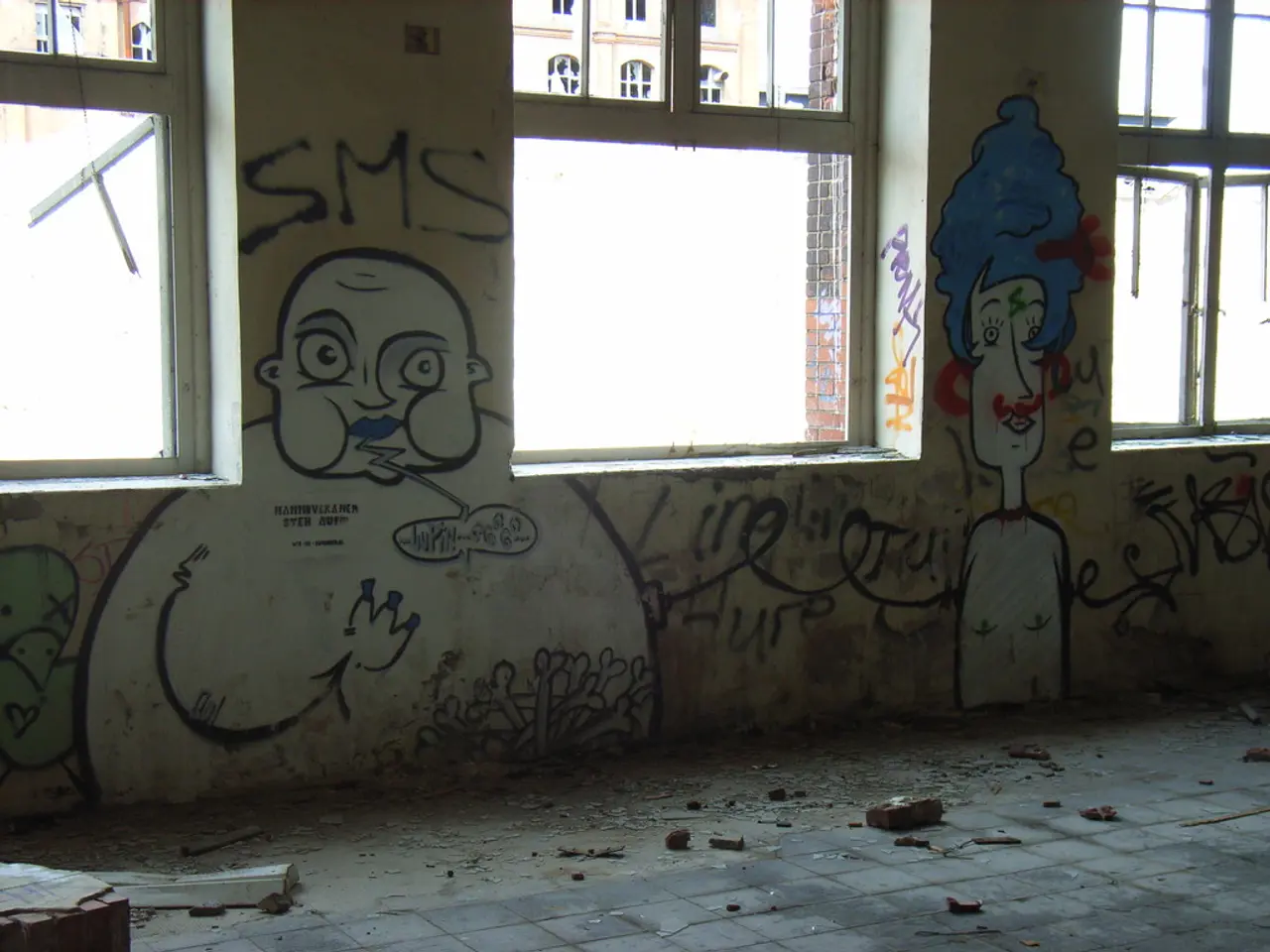Wall fissure wider than a 10-cent coin? Experts warn it might indicate a significant issue
Subsidence, a common issue in homes, can be a cause for concern for many homeowners. This article aims to provide you with a clear understanding of the signs of subsidence, its potential causes, and the steps to take if you suspect your property might be affected.
One of the most obvious signs of subsidence is the appearance of cracks in walls. Vertical cracks, especially those visible on both sides, may indicate a structural issue that could require underpinning of the existing foundations or the addition of new structural support. If a crack is diagonal or follows a stepped pattern, it's more likely to be related to ground movement. Horizontal cracks, on the other hand, may signal pressure or movement within the wall and could indicate serious structural stress or wall bowing.
Diagonal cracks, in particular, should set alarm bells ringing, as they are a cause for concern and may indicate subsidence. Other symptoms of subsidence might include drainage issues, water damage, or a structure appearing to lean.
In addition to cracks in walls, other signs of subsidence include doors and windows that stick or become difficult to open/close, often due to frame distortion from foundation movement. Uneven, sloping, or sagging floors that cause furniture to tilt or water to pool in certain spots are also indicative of subsidence. Separation or gaps appearing around skirting boards, architraves, or ceiling cornices are further signs to look out for.
Cracks in ceilings and foundations, particularly near door or window openings, and sometimes in a stair-step or jagged pattern in brickwork or plaster, are also signs of subsidence. Other indicators include leaning chimneys, cracks at building corners or where extensions meet, and gaps or cracking around window and door frames.
It's important to note that very fine, hairline cracks are common and typically caused by shrinkage, drying, or minor settlement. While they are usually harmless, it's still recommended to monitor these cracks for changes.
Seasonal changes in cracks (widening during dry periods, closing during wet months) can indicate soil shrinkage and expansion.
If you think your home has subsidence, it is important to get an independent specialist building surveyor's report for assessment. This will help you understand the extent of the issue and the best course of action to take. Having subsidence or a record of it on your property could impact your insurance and mortgage for excessive periods of time and even the ability to sell the property, so it is important to address the issue promptly.
In conclusion, understanding the signs of subsidence and taking prompt action can help you protect your home and avoid costly repairs. If you notice any of the signs mentioned above, don't hesitate to consult a professional for further investigation.
References:
- Building Research Establishment
- Royal Institution of Chartered Surveyors
- Property Care Association
- Citizens Advice
- Trading Standards
- In the realm of health-and-wellness, it's equally crucial to recognize the signs of subsidence in our homes, as unattended structural issues can lead to costly repairs and potential problems with insurance and mortgage.
- Apart from cracks in walls, other visual signs of subsidence can include leaning chimneys, separation around skirting boards or ceiling cornices, and doors and windows that stick due to frame distortion.
- Just as we prioritize mental health and proper nutrition, understanding the signs of subsidence and promptly addressing them can help maintain the wellbeing of our homes and assets, ensuring a healthier living environment for us all. CBD oil, a popular supplement often used for its potential benefits on mental health and skin-care, while not directly related to subsidence, serves as a reminder that proactive care and maintenance yield substantial benefits in various aspects of our lives.




